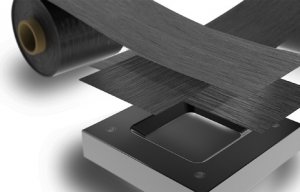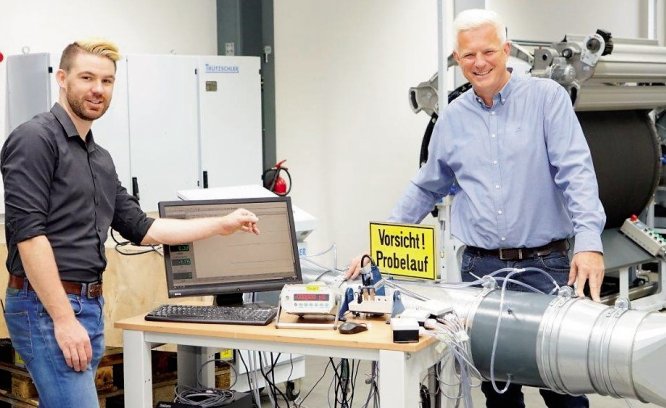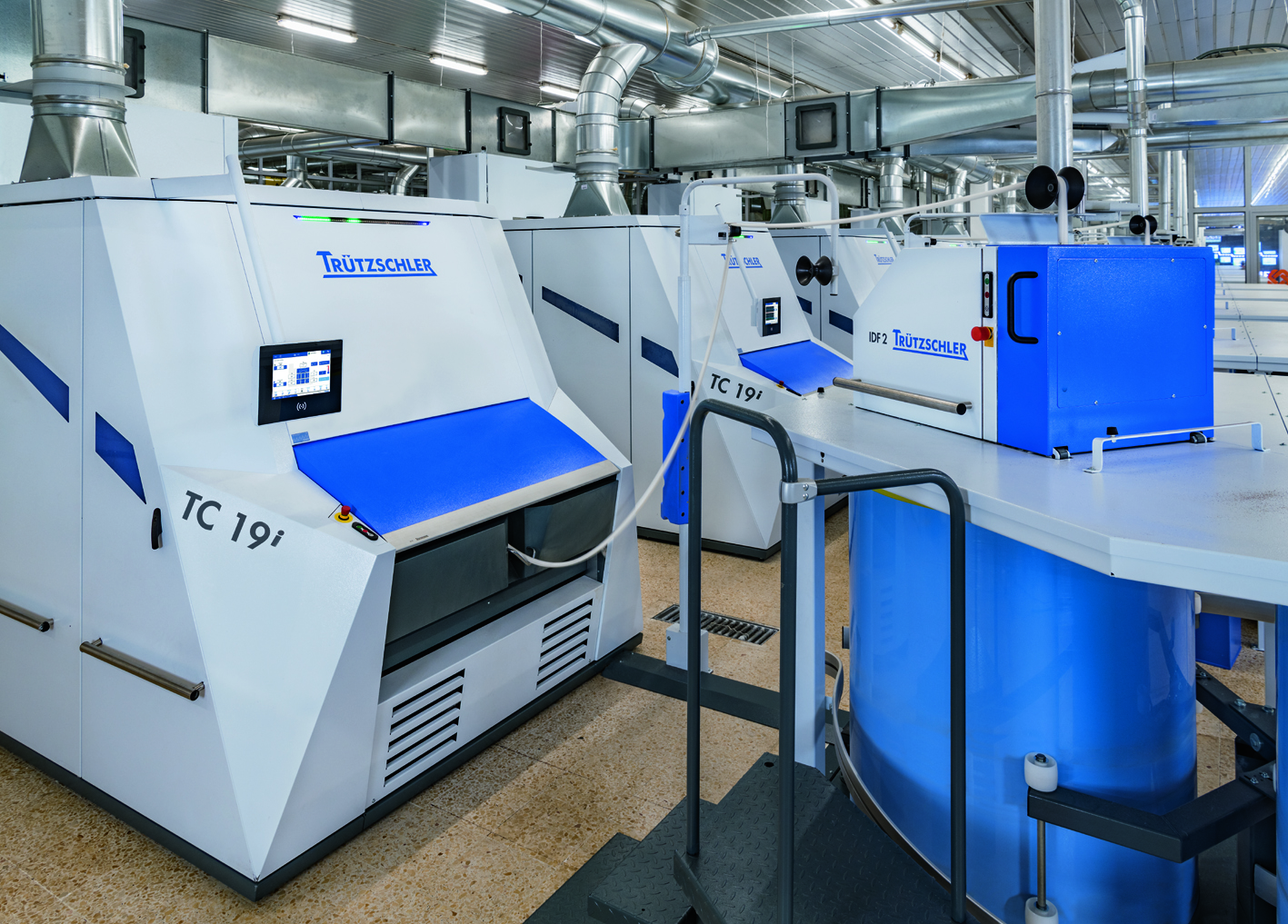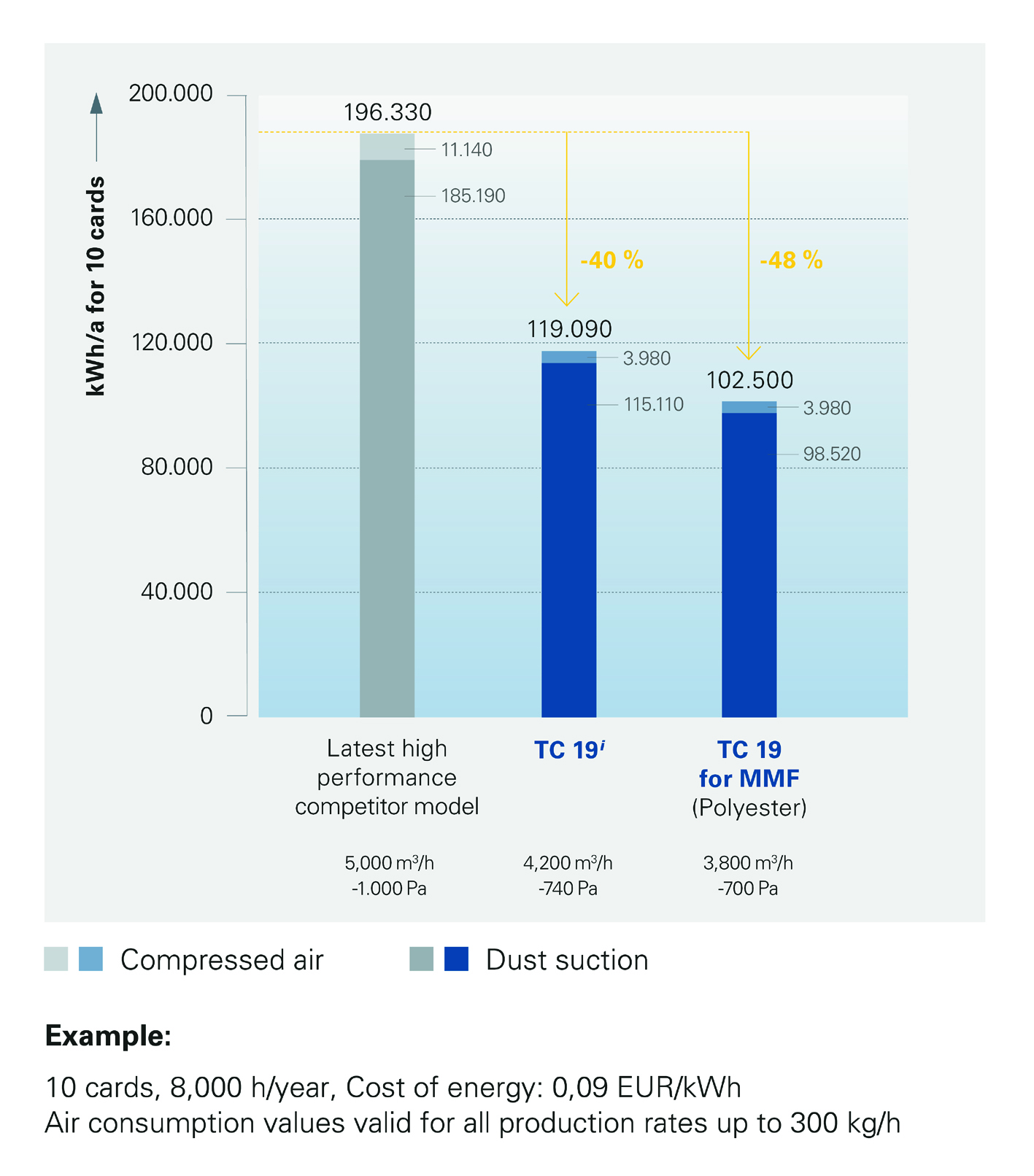
Advanced composites at a cost-effective scale
More than 2,000 machines sold worldwide prove quality and production leaps in the double-digit percentage range.

27th September 2021
Innovation in Textiles
|
Mönchengladbach, Germany
The TC 19i intelligent card sets a new benchmark for energy-efficient carding, according to Trützschler, headquartered in Mönchengladbach, Germany.
Global energy consumption reached a record high in 2019, following a 40-year trend for rapidly increasing energy demand that was only halted by the Coronavirus pandemic. It’s estimated that more than 8% of this energy is still generated from fossil fuels that produce CO2 emissions and contribute to climate change. Renewable energy offers a solution to this problem, but saving energy whenever possible is an even more effective approach.
T-GO gap optimiser
The Trützschler TC 19i features the unique T-GO gap optimiser, which continuously and automatically monitors and adjusts the carding gap to its ideal position during production. By now, more than 2,000 intelligent cards sold worldwide prove quality and production leaps in the double-digit percentage range daily, reducing energy demand per kilogram produced. New drive and air technologies further reduce energy consumption of the TC 19i.
The most energy-intensive elements in a carding machine are the drive, the dust suction process and the compressed air system. Permanent suction is needed to remove dust and cotton waste in key places. In contrast to Trützschler cards, many cards on the market use compressed air for suction hoods in the pre-carding and post-carding areas. Optimisation of these areas has made the TC 19i a benchmark for energy efficiency in carding because it uses less electricity, lower suction pressure and less compressed air than other machines, while providing the highest production rates currently available on the market.

In a head-to-head comparison between the TC 19i and a high-performance card from a competitor, the TC 19i consumed at least 10% less energy per kilogram of material produced when manufacturing rotor yarn from a cotton and cotton waste mix.
The compared energy values included electric power consumption and energy required for suction and compressed air and were measured in both cards at the same production of 180 kg/h.
A 10% reduction in energy per kilogram of sliver produced can have a significant impact on a spinning mill’s profitability – annual savings worth a five-digit sum are frequently possible, depending on the output of the mill. The customer trial also showed the TC 19i’s reliability at the customer’s usual production rate of 180 kg/h, and even demonstrated stable performance at 300 kg/h in the same application. Because the TC 19i with T-GO gap optimiser realises maximum production rates with no compromise in quality, manufacturers can reduce their energy demand and investment costs drastically – less machines are needed to achieve the desired output, and energy consumption per production is reduced.
Air technology
In addition to increased productivity, air technology plays a pivotal role in the energy balance of the TC 19i.
“In the card’s optimisation, we first reduced the need for compressed air wherever possible,” explains Christian Freitag, head of air technology at Trützschler. “We also reduced the suction pressure and air requirements for suction. All of our air collectors, for example, are carefully developed to eliminate potential resistance and facilitate an ideal flow.”

This improvement was made possible by a long and sometimes challenging innovation process involving mathematical models of air flows, as well as flow simulations and prototypes. By combining the final flow-optimised parts in the TC 19i, Trützschler’s experts have developed a card that operates with suction pressure of just 740 Pa and with an air requirement of only 4200 m³/h. This translates into 40% less energy demand for air technology compared to the latest high performance competitor model.
“We didn’t stop there,” says Ralf Helbig, R&D engineer for air technology at Trützschler. “We have also made it possible to further reduce energy demand in polyester applications, which are increasingly important to our customers. In a polyester configuration, the TC 19i can reduce the necessary pressure for waste suction by a further 14% because of improvements to elements in the pre-carding and post-carding areas, and the removal of suction hoods. The suction is still just as reliable – but it needs much less energy.”

Business intelligence for the fibre, textiles and apparel industries: technologies, innovations, markets, investments, trade policy, sourcing, strategy...
Find out more